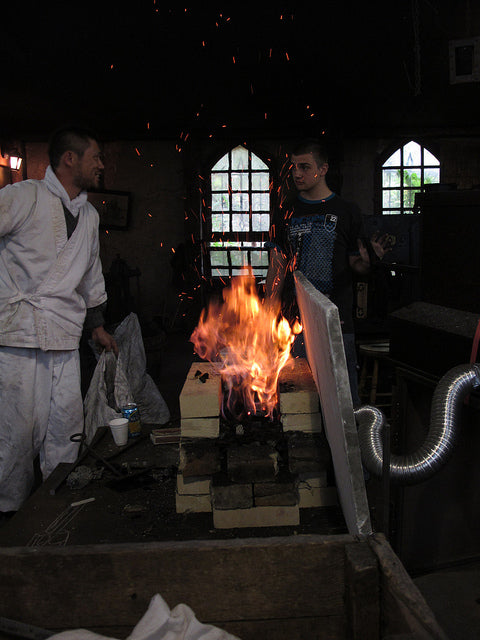Tu carrito está vacío


Traditional Japanese swords are prized for their exceptional craftsmanship and quality. Many modern sword collectors and martial arts experts recognize them as being the world's best swords. There are several reasons for this, one of which is the metal used in their construction.
Some of the earliest Japanese swords were made of soft steel. This proved better than bronze, but these swords were still susceptible to breakage. It wasn't long before Japanese swordsmiths pioneered a new, better type of metal: tamahagane steel.
What Is Tamahagane Steel?
Meaning "round and precious steel," tamahagane is special type of steel that was invented during feudal Japan. It's characterized by a higher carbon content than traditional steel, giving it certain qualities that aren't found elsewhere.
Of course, too much carbon creates a fragile blade; therefore, the swordsmiths had to find the right concentration. Tamahagane steel produced today contains roughly 1% to 1.5% carbon. In feudal Japan, however, it often contained between 3% and 4.5% carbon.
Origins of Tamahagane Steel
It's believed that tamahagane steel was invented out of trial and error. Japanese swordsmiths would often experiment with different mixtures of ingredients to determine what worked best. They discovered that mixing iron sand with little-to-no sulfur or phosphorus with coal resulted in a superior metal that was perfect for making swords.
The end result with high-carbon steel known as tamahagane. Swordsmiths discovered that swords made of tamahagane could hold an edge more easily and could even flex -- as opposed to breaking -- under stress.
Tamahagane Steel Production
Tamahagane steel is made of iron sand known as satesu. There are two different types of satesu: akome and masa, the latter of which offers a higher level of quality.
To make tamahagane steel, satesu is placed into a clay tub, after which the tub is dried and heated to temperatures of roughly 1,800 degrees Fahrenheit. Shortly thereafter, charcoal (carbon) is added to make the metal harder. Again, it's important to use the right amount of charcoal. If too much or too little is added, the metal will be weak and susceptible to damage.
So, how long does it take to make tamahagane steel? It varies depending on the specific type of tamahagane, who's making it, and what tools this person has at their disposal. With that said, the process is fairly time consuming, taking approximately 36 to 72 hours to complete. Throughout this process, the individual making the steel must constantly add satesu about once every 10 minutes, while also stirring and turning the mixture over.